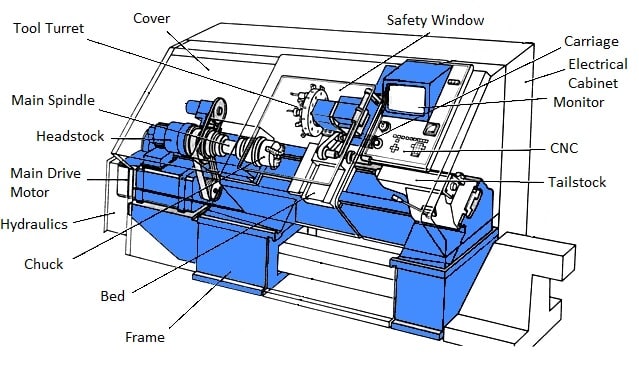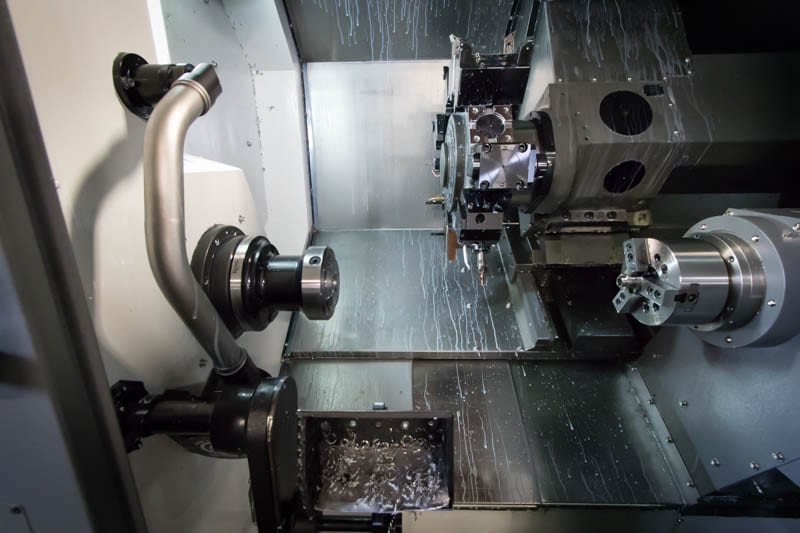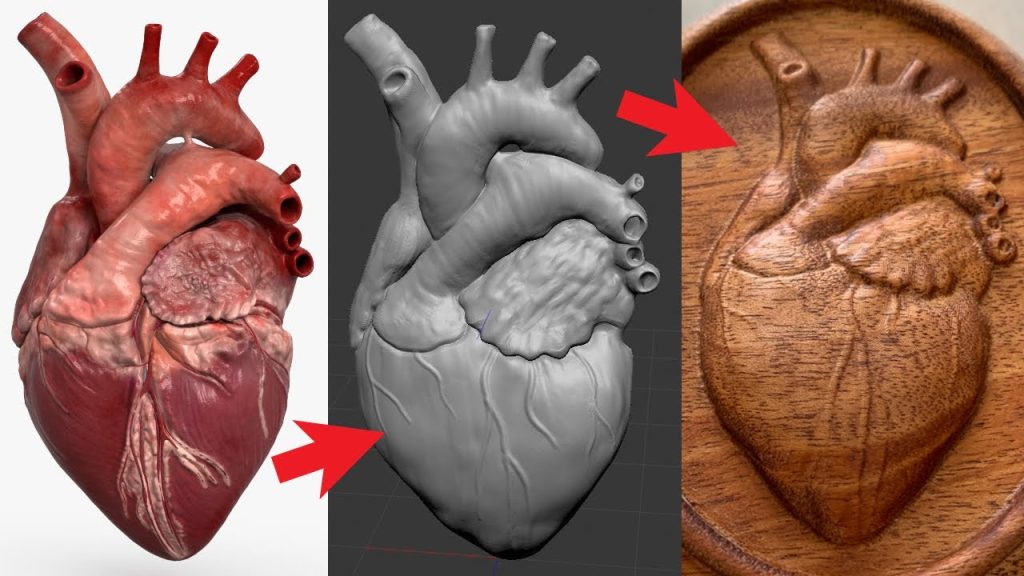Table of Contents
CNC turning machines are incredibly versatile and useful tools in the modern manufacturing industry. But, setting up these machines can be a daunting task, especially for those who are new to the process. In this article, we’ll guide you through the essential steps required to set up a CNC turning machine, from selecting the right tools to programming the machine to start turning.
Whether you’re an experienced machinist or just starting out, this guide will provide you with the knowledge and skills necessary to set up your CNC turning machine quickly and efficiently. So, let’s dive in and learn how to set up a CNC turning machine like a pro!
- Read the manual to understand the machine’s functions and controls.
- Ensure the machine is properly grounded and connected to a power source.
- Install the necessary tools and tool holders.
- Mount the workpiece securely in the chuck or collet.
- Enter the machining program into the machine’s computer.
- Begin the machining process and monitor the machine for any issues.
How to Set Up a CNC Turning Machine?
CNC turning machines are used in a variety of industries to create precise parts and components. Setting up a CNC turning machine can be a daunting task, but with the proper knowledge and preparation, it can be completed quickly and efficiently. In this article, we will provide a step-by-step guide to setting up a CNC turning machine.
Step 1: Safety First
Before beginning the setup process, it is crucial to ensure that all safety precautions have been taken. This includes wearing protective gear such as safety glasses, gloves, and earplugs. Additionally, ensure that the machine is properly grounded and that all emergency stop buttons are functioning correctly.
Once all safety measures have been taken, it is time to begin the setup process.
Step 1.1: Power Up the Machine
The first step in setting up a CNC turning machine is to power it up. Ensure that the machine is properly plugged in and that all power switches are in the “on” position. Once the machine is powered up, the control panel should light up, indicating that it is ready to be used.
Step 1.2: Load the Workpiece
Next, load the workpiece onto the machine. This can be done using a variety of methods, including a chuck or a collet. Ensure that the workpiece is properly secured and that it is the correct size and shape for the desired part.
Step 2: Set the Tooling
Once the workpiece is loaded onto the machine, it is time to set the tooling. This includes selecting the correct cutting tool and setting its position and orientation.
Step 2.1: Select the Cutting Tool
The first step in setting the tooling is to select the appropriate cutting tool. This will depend on the material being cut and the desired part specifications. Once the cutting tool has been selected, it should be loaded into the tool holder.
Step 2.2: Set the Tool Position
Next, set the tool position. This can be done manually or through the use of a tool presetter. Ensure that the tool is positioned correctly and that it is the correct distance from the workpiece.
Step 3: Set the Machine Parameters
Once the tooling has been set, it is time to set the machine parameters. This includes the spindle speed, feed rate, and depth of cut.
Step 3.1: Set the Spindle Speed
The first parameter to set is the spindle speed. This will depend on the material being cut and the cutting tool being used. Ensure that the spindle speed is set to the appropriate RPM for the desired part specifications.
Step 3.2: Set the Feed Rate
Next, set the feed rate. This is the rate at which the cutting tool moves across the workpiece. Ensure that the feed rate is set to the appropriate speed for the desired part specifications.
Step 3.3: Set the Depth of Cut
Finally, set the depth of cut. This is the distance that the cutting tool will penetrate into the workpiece. Ensure that the depth of cut is set to the appropriate distance for the desired part specifications.
Step 4: Run a Test Cut
Before beginning production, it is important to run a test cut to ensure that all settings are correct. This can be done by running a small sample part and measuring it against the desired specifications.
Step 4.1: Adjust the Settings
If the test cut is not within the desired specifications, adjust the machine parameters and run another test cut. Continue this process until the desired specifications are met.
Step 4.2: Begin Production
Once the test cut is within the desired specifications, it is time to begin production. Ensure that all safety measures are in place and that the machine is properly monitored throughout the production process.
Conclusion
In conclusion, setting up a CNC turning machine requires careful attention to detail and a thorough understanding of the machine and its capabilities. By following the steps outlined in this article, you can ensure that your machine is set up correctly and that you are producing high-quality parts and components. Remember to always prioritize safety and to never leave the machine unattended during production.
Frequently Asked Questions
What is a CNC turning machine?
A CNC turning machine is a piece of equipment used in the machining industry to cut, shape, and form materials like metal, wood, and plastic. It uses computer numerical control (CNC) technology to control the cutting tools and produce precise and accurate results.
To set up a CNC turning machine, you need to ensure that the machine is properly installed and calibrated. You also need to select the appropriate cutting tools and program the machine with the correct instructions to produce the desired product.
What are the steps involved in setting up a CNC turning machine?
The first step in setting up a CNC turning machine is to ensure that the machine is properly installed and calibrated. This involves checking the machine’s power supply, adjusting the machine’s leveling, and aligning the spindle with the workpiece.
Next, you need to select the appropriate cutting tools for the job. This involves choosing the right type of tool, material, and size, as well as determining the cutting speed and feed rate.
Finally, you need to program the machine with the correct instructions to produce the desired product. This involves entering the tool path, cutting parameters, and other specifications into the machine’s control software.
What are some common mistakes to avoid when setting up a CNC turning machine?
One common mistake to avoid when setting up a CNC turning machine is failing to properly calibrate the machine. This can result in inaccurate cuts and poor quality products.
Another mistake to avoid is using incorrect cutting tools or failing to properly maintain the tools. This can cause the tools to wear out quickly, leading to poor quality cuts and potential damage to the machine.
Additionally, it’s important to avoid programming errors, such as incorrect tool paths or cutting parameters, which can also result in poor quality cuts and potentially damage the machine.
What are the benefits of using a CNC turning machine?
One of the biggest benefits of using a CNC turning machine is the ability to produce precise and accurate products. The machine’s computer-controlled technology allows for highly precise cuts, resulting in high-quality products.
Additionally, CNC turning machines can increase productivity and efficiency, as they can perform multiple operations at once and require minimal manual labor. This can help reduce labor costs and increase overall efficiency.
Finally, CNC turning machines can help reduce waste and scrap, as they can be programmed to make precise cuts and minimize material waste.
What types of products can be produced using a CNC turning machine?
CNC turning machines can be used to produce a wide variety of products, including metal parts and components, plastic products, and wood products. Some common products that can be produced using CNC turning machines include automotive parts, aerospace components, medical devices, and consumer goods. The machine’s ability to produce precise and accurate cuts makes it ideal for producing high-quality products in a variety of industries.
In conclusion, setting up a CNC turning machine requires a thorough understanding of its various components and functions. It is essential to follow the manufacturer’s instructions and safety guidelines to ensure optimal performance and prevent accidents.
One of the key factors in a successful setup process is selecting the appropriate cutting tools and materials for the job. This involves considering factors such as the material’s hardness, the required precision, and the desired finish. By carefully selecting the right tools and materials, you can optimize your machine’s efficiency and productivity.
Finally, regular maintenance and calibration are vital for maintaining the accuracy and reliability of your CNC turning machine. Routine checks of the machine’s parts and lubrication, as well as regular calibration of its sensors and software, will help ensure that it operates at peak performance and produces high-quality parts consistently. By following these guidelines, you’ll be able to set up and maintain your CNC turning machine with confidence and achieve excellent results.
Request a quote today!
[contact-form-7 id="1578" title="Contact form"]
Please compress the file into a ZIP or RAR file before uploading. Alternatively, send through your RFQ by email.
enquires@unitymanufacture.com





